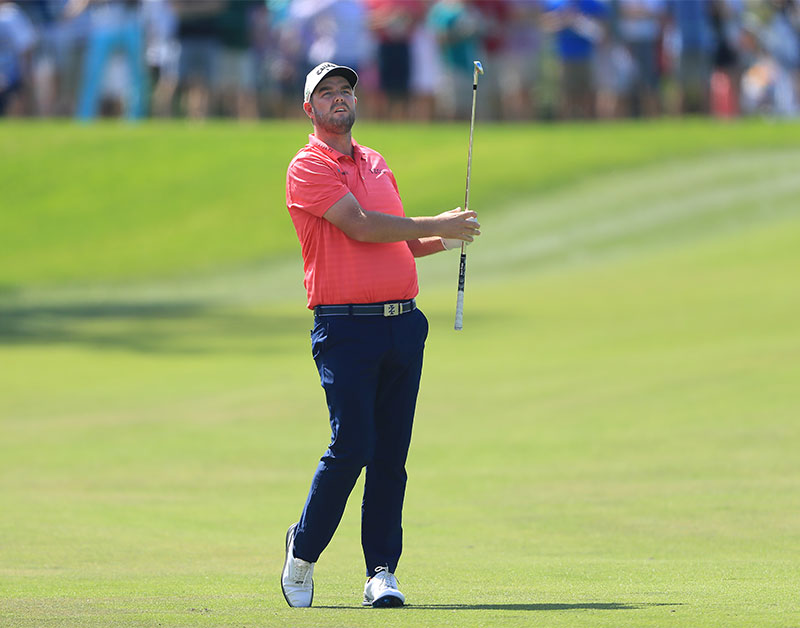Golf is hard. Too hard.
Two years ago, I embarked on a personal journey of development: could a 3-marker, who has never had a golf lesson, close the gap on the club champions who held plus-2 handicaps, and also those with aspiration for state and national representation? Yes, golf is harder than finding words that rhyme.
The plan was to have a weekly coaching session and surround that with a couple of practice sessions to support Wednesday and Saturday rounds. Yes, golf is harder than finding a job that allows you this much time to pursue a selfish endeavour.
The conclusion after two years is that yes, the gap was closed. I’m now a plus-1 marker. As an aside, I’m actually considering never playing another round so that my plus-1 will hold forever. Imagine turning up to your 35-year high school reunion and being able to promote your plus-1 handicap? You’d at least be held in far higher esteem than the guy who married Olivia Newton John, then faked his own death, only to be found in Mexico shacked up with his German lover.
‘I’m actually considering never playing another round so that my plus-1 will hold forever.’ – Brett Geeves
And while plus-1 sounds fancy and is a feat I should be proud of, it’s my handicap at every other course that has made this ‘experiment’ an epic failure.
Throughout the past two years, I have shot subpar rounds at my home track a good number of times. And have done so in tournament play – including a 68, 71 that led to a second-place finish in a state team qualifier. Without knowing, I actually led the tournament playing the 35th hole. Sadly, my tee shot ended up in some sticks, which when struck again led to my ball doing a Patrick McDermott and disappearing for a better life in Mexico. I took a double and lost the tourney by a shot. Yes, golf is harder than escaping Olivia Newton John.

Research of rounds played away from my home track in tournament play – state qualifiers away from Tasmania Golf Club – during this time show an average of 77. That’s playing closer to a handicap of 5.
The moment of realisation that I was unlikely to ever improve outside my home track came during a conversation with a former state team captain and current player. We were discussing my dismal showing at the Tasmanian Open at Ulverstone Golf Club. I’ve written about “Allison” in this very publication, so you’ll know how brutal she is and also how much I crave her acceptance.
84. 82. 81. DNF.
My inability to make an up-and-down became so infuriating that I resorted to a round two strategy of chipping with my 3-wood. The result was my 3-wood being thrown at a tree and splitting in half.
I hit enough fairways and greens to stump up semi-respectable scores. But the regulation of missed putts and chip shots to beyond eight feet far exceeded the above average numbers of my ball-striking.
The words of advice that flowed from the state team senior golfer were this: you just have to find a way of grinding it out. What is your default par setting? What shot can you hit over and over to get you a string of pars? How can you get yourself back in the game?
Easy, I’ll just bowl a bouncer. It’s the quickest way of re-calibrating my release point.
Aaaaaaaaahhhh, a life’s work. A life’s practice. A life’s trust in the process. That right there is the difference.
As a professional cricketer, I had learnt how to re-calibrate on the fly. One bad over, or a string of bad balls, were generally rectified quickly by my in-built process of being able to quickly reset to my default setting. Bouncer. Back of a length. Then back to the right length.
In golf, I simply don’t have enough experience. The 10,000 hours theory. Twice weekly practice, one coaching session per week and two rounds on the same course per week, for two years, does not equate to a life’s practice. It has not geared me with the fundamentals to be able to recalibrate on the fly when things aren’t working; particularly on greens and surrounds that are unfamiliar.
So, I’m calling it; unless someone is going to pay me $80,000 to quit my job to become a full-time golfer, the gap I’ve been working hard to close is unattainable.
But perhaps the biggest lesson in all of this is for those aspiring state and national players who are working hard to close the largest gap of all, to become the next Marc Leishman, Jason Day, Adam Scott and Cameron Smith: for those that make tour school, less than 2 percent will make money as a touring professional.
Golf is hard. Too hard.

